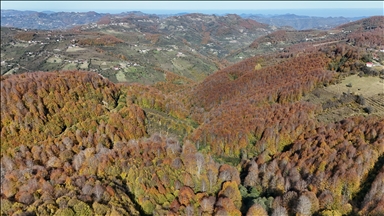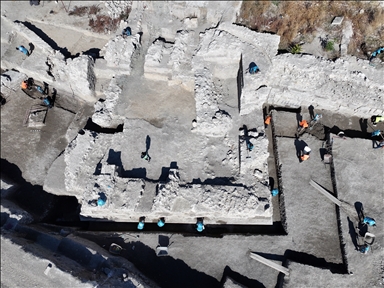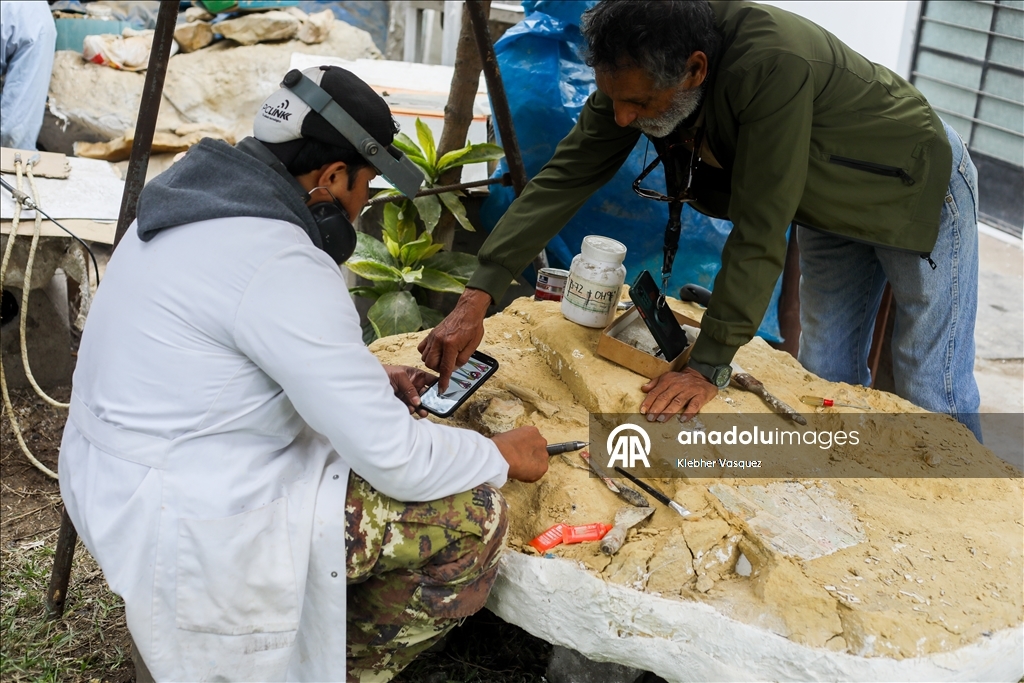
LIMA, PERU - NOVEMBER 4 : A group of scientists restores the fossil of a 20-million-year-old seabird in Lima, Peru, on November 4, 2025. Peruvian paleontologist Mario Urbina, regarded as one of the country’s most prominent scientists in recent years, leads a team of professionals from the Natural History Museum who have made some of the most important paleontological discoveries in Peru for the world. The group is currently in the process of restoring one of its most recent findings: the fossilized remains of a Pelagornis, an extinct seabird that lived more than 20 million years ago. The specimen, with a wingspan of several meters, was unearthed two months ago in the Ica Desert, south of Lima. Once the delicate restoration work is completed, the fossil will be formally presented to the public, marking a new milestone in the scientific career of Urbina and his dedicated team. ( Klebher Vasquez - Anadolu Agency )
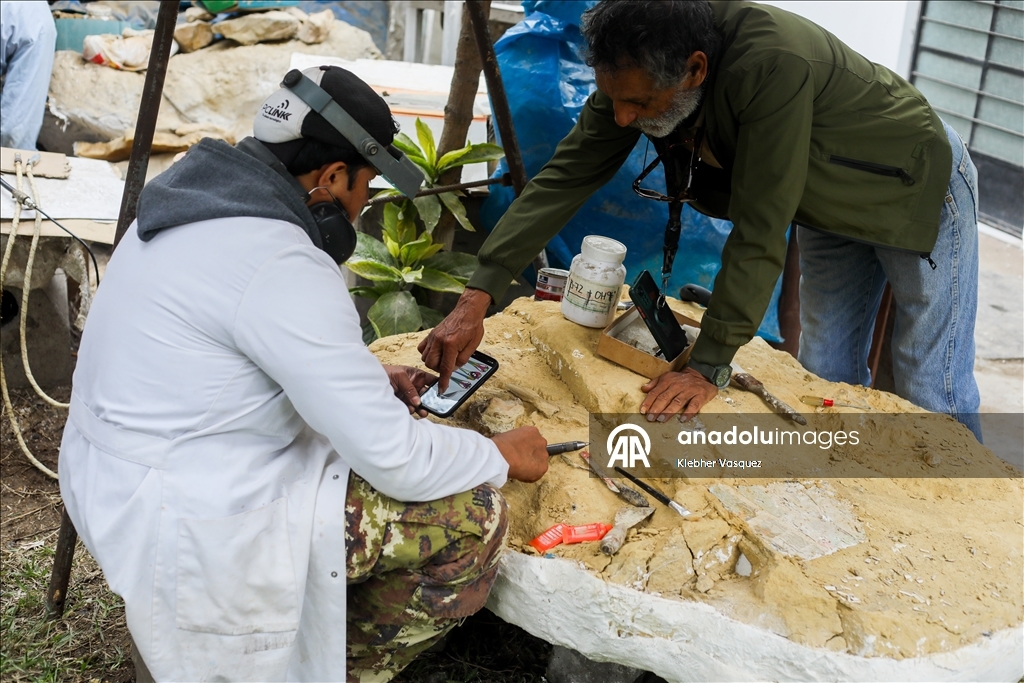
LIMA, PERU - NOVEMBER 4 : A group of scientists restores the fossil of a 20-million-year-old seabird in Lima, Peru, on November 4, 2025. Peruvian paleontologist Mario Urbina, regarded as one of the country’s most prominent scientists in recent years, leads a team of professionals from the Natural History Museum who have made some of the most important paleontological discoveries in Peru for the world. The group is currently in the process of restoring one of its most recent findings: the fossilized remains of a Pelagornis, an extinct seabird that lived more than 20 million years ago. The specimen, with a wingspan of several meters, was unearthed two months ago in the Ica Desert, south of Lima. Once the delicate restoration work is completed, the fossil will be formally presented to the public, marking a new milestone in the scientific career of Urbina and his dedicated team. ( Klebher Vasquez - Anadolu Agency )
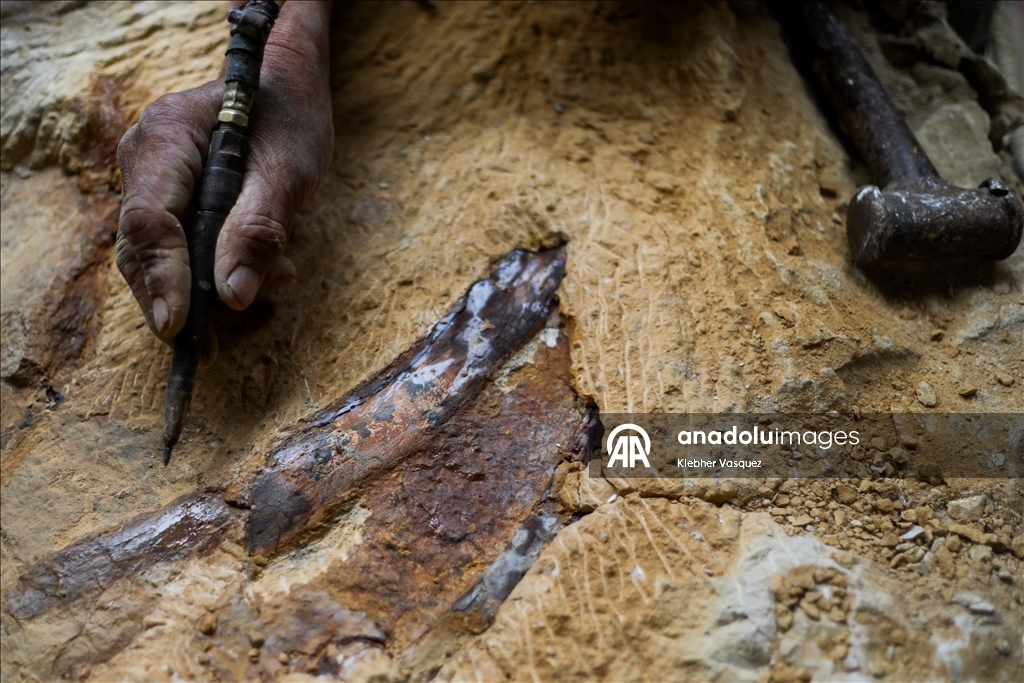
LIMA, PERU - NOVEMBER 4 : A group of scientists restores the fossil of a 20-million-year-old seabird in Lima, Peru, on November 4, 2025. Peruvian paleontologist Mario Urbina, regarded as one of the country’s most prominent scientists in recent years, leads a team of professionals from the Natural History Museum who have made some of the most important paleontological discoveries in Peru for the world. The group is currently in the process of restoring one of its most recent findings: the fossilized remains of a Pelagornis, an extinct seabird that lived more than 20 million years ago. The specimen, with a wingspan of several meters, was unearthed two months ago in the Ica Desert, south of Lima. Once the delicate restoration work is completed, the fossil will be formally presented to the public, marking a new milestone in the scientific career of Urbina and his dedicated team. ( Klebher Vasquez - Anadolu Agency )

LIMA, PERU - NOVEMBER 4 : A group of scientists restores the fossil of a 20-million-year-old seabird in Lima, Peru, on November 4, 2025. Peruvian paleontologist Mario Urbina, regarded as one of the country’s most prominent scientists in recent years, leads a team of professionals from the Natural History Museum who have made some of the most important paleontological discoveries in Peru for the world. The group is currently in the process of restoring one of its most recent findings: the fossilized remains of a Pelagornis, an extinct seabird that lived more than 20 million years ago. The specimen, with a wingspan of several meters, was unearthed two months ago in the Ica Desert, south of Lima. Once the delicate restoration work is completed, the fossil will be formally presented to the public, marking a new milestone in the scientific career of Urbina and his dedicated team. ( Klebher Vasquez - Anadolu Agency )
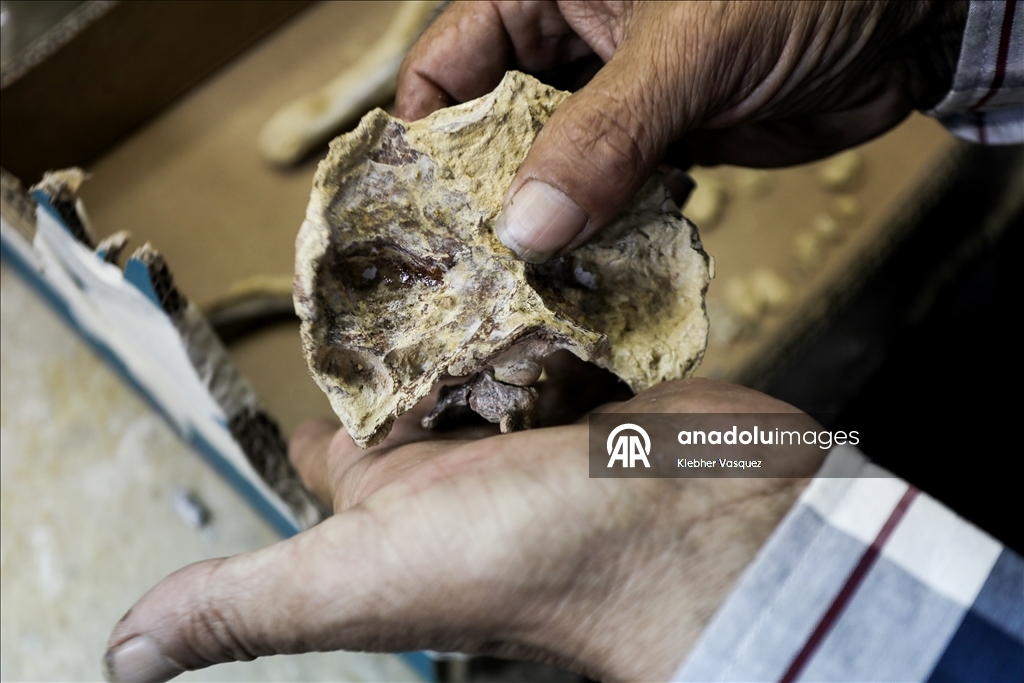
LIMA, PERU - NOVEMBER 4 : A group of scientists restores the fossil of a 20-million-year-old seabird in Lima, Peru, on November 4, 2025. Peruvian paleontologist Mario Urbina, regarded as one of the country’s most prominent scientists in recent years, leads a team of professionals from the Natural History Museum who have made some of the most important paleontological discoveries in Peru for the world. The group is currently in the process of restoring one of its most recent findings: the fossilized remains of a Pelagornis, an extinct seabird that lived more than 20 million years ago. The specimen, with a wingspan of several meters, was unearthed two months ago in the Ica Desert, south of Lima. Once the delicate restoration work is completed, the fossil will be formally presented to the public, marking a new milestone in the scientific career of Urbina and his dedicated team. ( Klebher Vasquez - Anadolu Agency )

LIMA, PERU - NOVEMBER 4 : A group of scientists restores the fossil of a 20-million-year-old seabird in Lima, Peru, on November 4, 2025. Peruvian paleontologist Mario Urbina, regarded as one of the country’s most prominent scientists in recent years, leads a team of professionals from the Natural History Museum who have made some of the most important paleontological discoveries in Peru for the world. The group is currently in the process of restoring one of its most recent findings: the fossilized remains of a Pelagornis, an extinct seabird that lived more than 20 million years ago. The specimen, with a wingspan of several meters, was unearthed two months ago in the Ica Desert, south of Lima. Once the delicate restoration work is completed, the fossil will be formally presented to the public, marking a new milestone in the scientific career of Urbina and his dedicated team. ( Klebher Vasquez - Anadolu Agency )
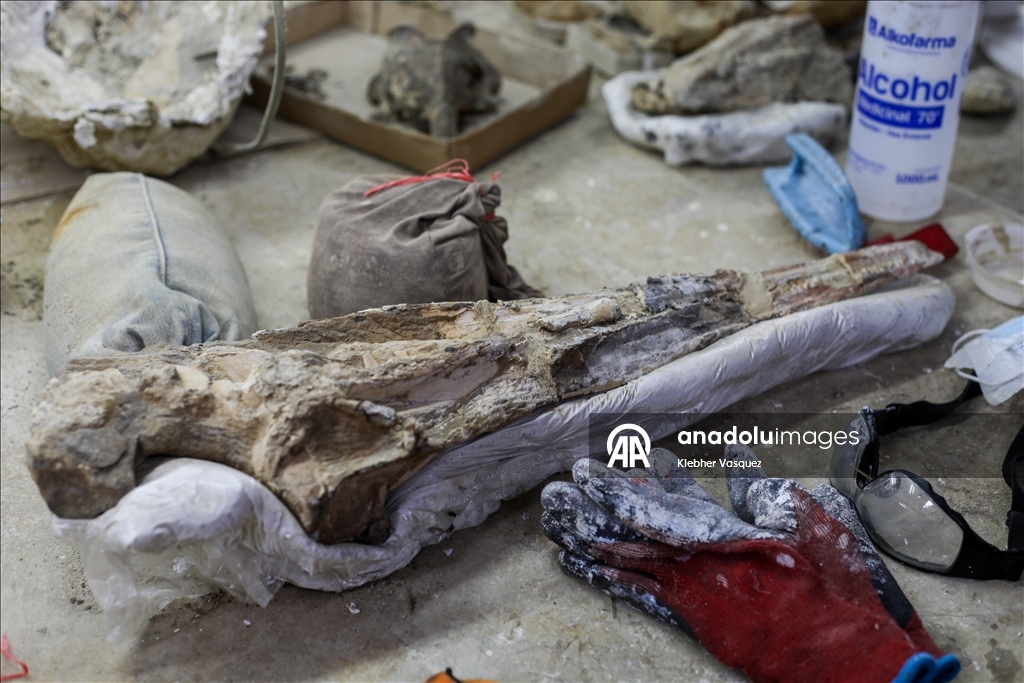
LIMA, PERU - NOVEMBER 4 : A group of scientists restores the fossil of a 20-million-year-old seabird in Lima, Peru, on November 4, 2025. Peruvian paleontologist Mario Urbina, regarded as one of the country’s most prominent scientists in recent years, leads a team of professionals from the Natural History Museum who have made some of the most important paleontological discoveries in Peru for the world. The group is currently in the process of restoring one of its most recent findings: the fossilized remains of a Pelagornis, an extinct seabird that lived more than 20 million years ago. The specimen, with a wingspan of several meters, was unearthed two months ago in the Ica Desert, south of Lima. Once the delicate restoration work is completed, the fossil will be formally presented to the public, marking a new milestone in the scientific career of Urbina and his dedicated team. ( Klebher Vasquez - Anadolu Agency )
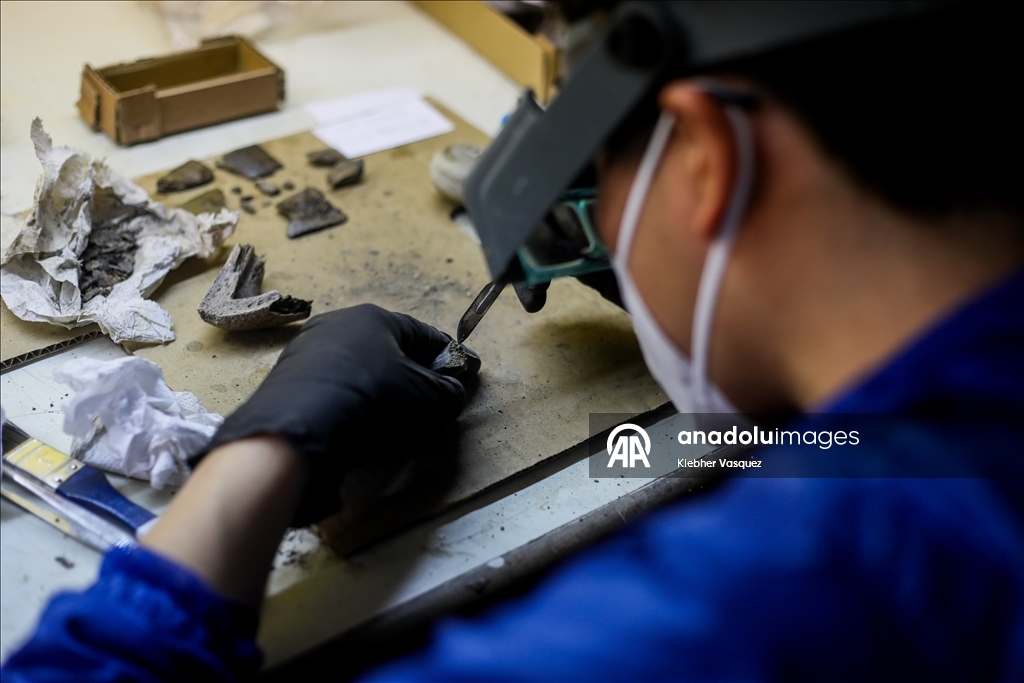
LIMA, PERU - NOVEMBER 4 : A group of scientists restores the fossil of a 20-million-year-old seabird in Lima, Peru, on November 4, 2025. Peruvian paleontologist Mario Urbina, regarded as one of the country’s most prominent scientists in recent years, leads a team of professionals from the Natural History Museum who have made some of the most important paleontological discoveries in Peru for the world. The group is currently in the process of restoring one of its most recent findings: the fossilized remains of a Pelagornis, an extinct seabird that lived more than 20 million years ago. The specimen, with a wingspan of several meters, was unearthed two months ago in the Ica Desert, south of Lima. Once the delicate restoration work is completed, the fossil will be formally presented to the public, marking a new milestone in the scientific career of Urbina and his dedicated team. ( Klebher Vasquez - Anadolu Agency )

LIMA, PERU - NOVEMBER 4 : A group of scientists restores the fossil of a 20-million-year-old seabird in Lima, Peru, on November 4, 2025. Peruvian paleontologist Mario Urbina, regarded as one of the country’s most prominent scientists in recent years, leads a team of professionals from the Natural History Museum who have made some of the most important paleontological discoveries in Peru for the world. The group is currently in the process of restoring one of its most recent findings: the fossilized remains of a Pelagornis, an extinct seabird that lived more than 20 million years ago. The specimen, with a wingspan of several meters, was unearthed two months ago in the Ica Desert, south of Lima. Once the delicate restoration work is completed, the fossil will be formally presented to the public, marking a new milestone in the scientific career of Urbina and his dedicated team. ( Klebher Vasquez - Anadolu Agency )

LIMA, PERU - NOVEMBER 4 : A group of scientists restores the fossil of a 20-million-year-old seabird in Lima, Peru, on November 4, 2025. Peruvian paleontologist Mario Urbina, regarded as one of the country’s most prominent scientists in recent years, leads a team of professionals from the Natural History Museum who have made some of the most important paleontological discoveries in Peru for the world. The group is currently in the process of restoring one of its most recent findings: the fossilized remains of a Pelagornis, an extinct seabird that lived more than 20 million years ago. The specimen, with a wingspan of several meters, was unearthed two months ago in the Ica Desert, south of Lima. Once the delicate restoration work is completed, the fossil will be formally presented to the public, marking a new milestone in the scientific career of Urbina and his dedicated team. ( Klebher Vasquez - Anadolu Agency )
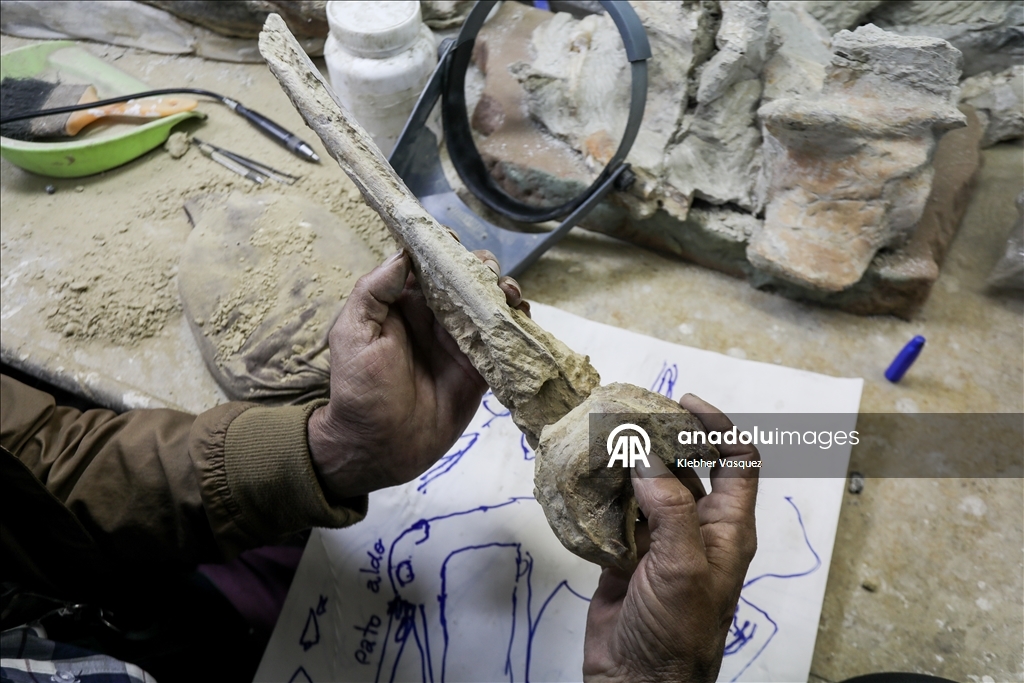
LIMA, PERU - NOVEMBER 4 : A group of scientists restores the fossil of a 20-million-year-old seabird in Lima, Peru, on November 4, 2025. Peruvian paleontologist Mario Urbina, regarded as one of the country’s most prominent scientists in recent years, leads a team of professionals from the Natural History Museum who have made some of the most important paleontological discoveries in Peru for the world. The group is currently in the process of restoring one of its most recent findings: the fossilized remains of a Pelagornis, an extinct seabird that lived more than 20 million years ago. The specimen, with a wingspan of several meters, was unearthed two months ago in the Ica Desert, south of Lima. Once the delicate restoration work is completed, the fossil will be formally presented to the public, marking a new milestone in the scientific career of Urbina and his dedicated team. ( Klebher Vasquez - Anadolu Agency )
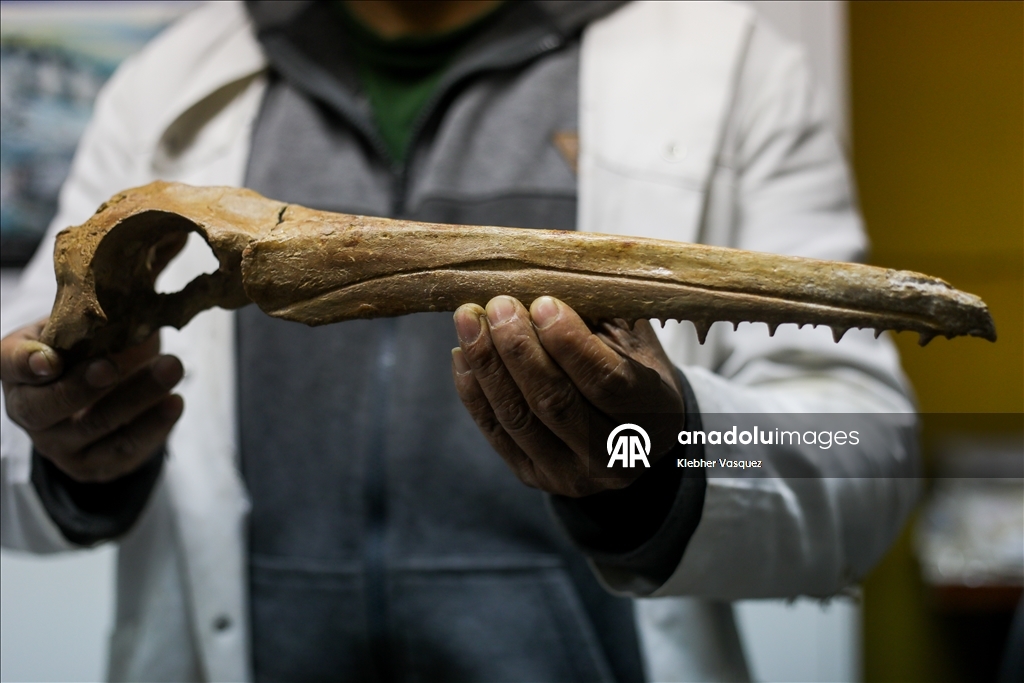
LIMA, PERU - NOVEMBER 4 : A group of scientists restores the fossil of a 20-million-year-old seabird in Lima, Peru, on November 4, 2025. Peruvian paleontologist Mario Urbina, regarded as one of the country’s most prominent scientists in recent years, leads a team of professionals from the Natural History Museum who have made some of the most important paleontological discoveries in Peru for the world. The group is currently in the process of restoring one of its most recent findings: the fossilized remains of a Pelagornis, an extinct seabird that lived more than 20 million years ago. The specimen, with a wingspan of several meters, was unearthed two months ago in the Ica Desert, south of Lima. Once the delicate restoration work is completed, the fossil will be formally presented to the public, marking a new milestone in the scientific career of Urbina and his dedicated team. ( Klebher Vasquez - Anadolu Agency )
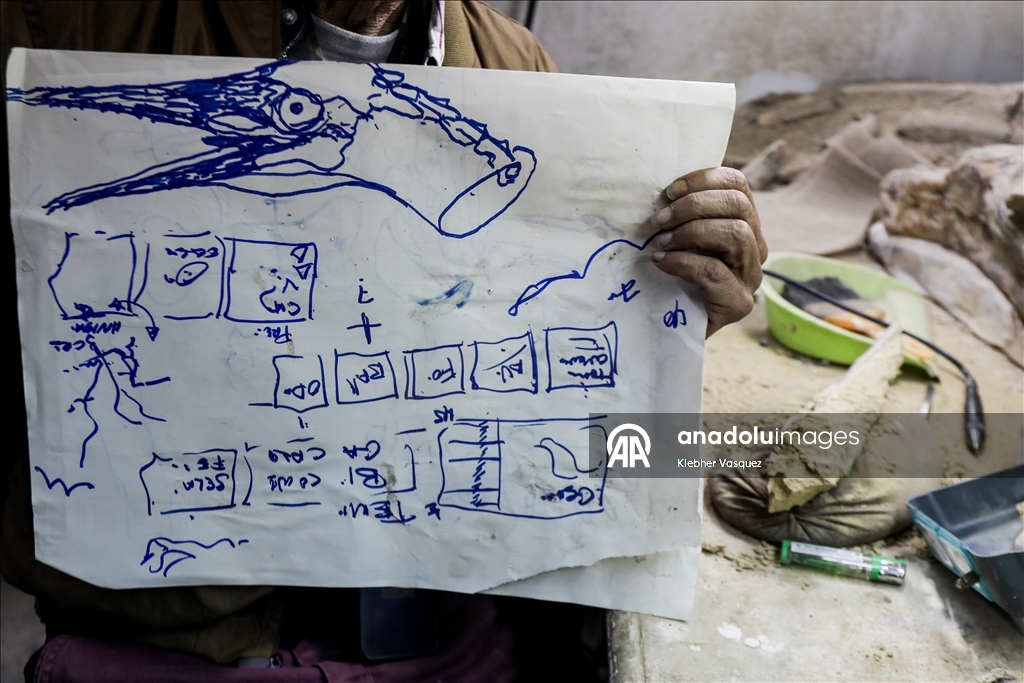
LIMA, PERU - NOVEMBER 4 : A group of scientists restores the fossil of a 20-million-year-old seabird in Lima, Peru, on November 4, 2025. Peruvian paleontologist Mario Urbina, regarded as one of the country’s most prominent scientists in recent years, leads a team of professionals from the Natural History Museum who have made some of the most important paleontological discoveries in Peru for the world. The group is currently in the process of restoring one of its most recent findings: the fossilized remains of a Pelagornis, an extinct seabird that lived more than 20 million years ago. The specimen, with a wingspan of several meters, was unearthed two months ago in the Ica Desert, south of Lima. Once the delicate restoration work is completed, the fossil will be formally presented to the public, marking a new milestone in the scientific career of Urbina and his dedicated team. ( Klebher Vasquez - Anadolu Agency )
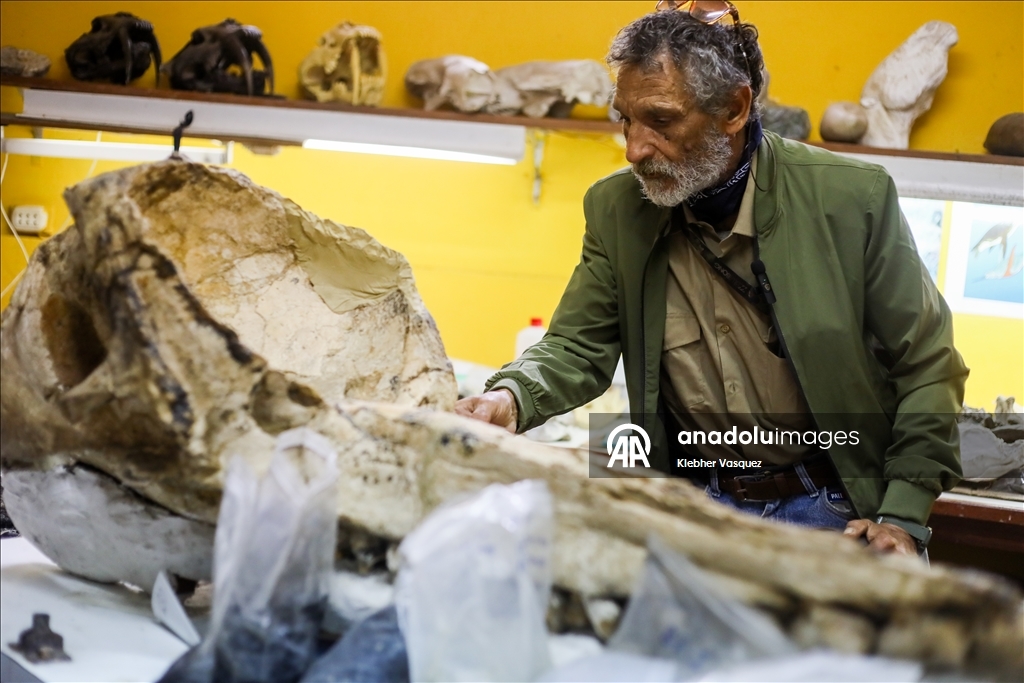
LIMA, PERU - NOVEMBER 4 : A group of scientists restores the fossil of a 20-million-year-old seabird in Lima, Peru, on November 4, 2025. Peruvian paleontologist Mario Urbina, regarded as one of the country’s most prominent scientists in recent years, leads a team of professionals from the Natural History Museum who have made some of the most important paleontological discoveries in Peru for the world. The group is currently in the process of restoring one of its most recent findings: the fossilized remains of a Pelagornis, an extinct seabird that lived more than 20 million years ago. The specimen, with a wingspan of several meters, was unearthed two months ago in the Ica Desert, south of Lima. Once the delicate restoration work is completed, the fossil will be formally presented to the public, marking a new milestone in the scientific career of Urbina and his dedicated team. ( Klebher Vasquez - Anadolu Agency )
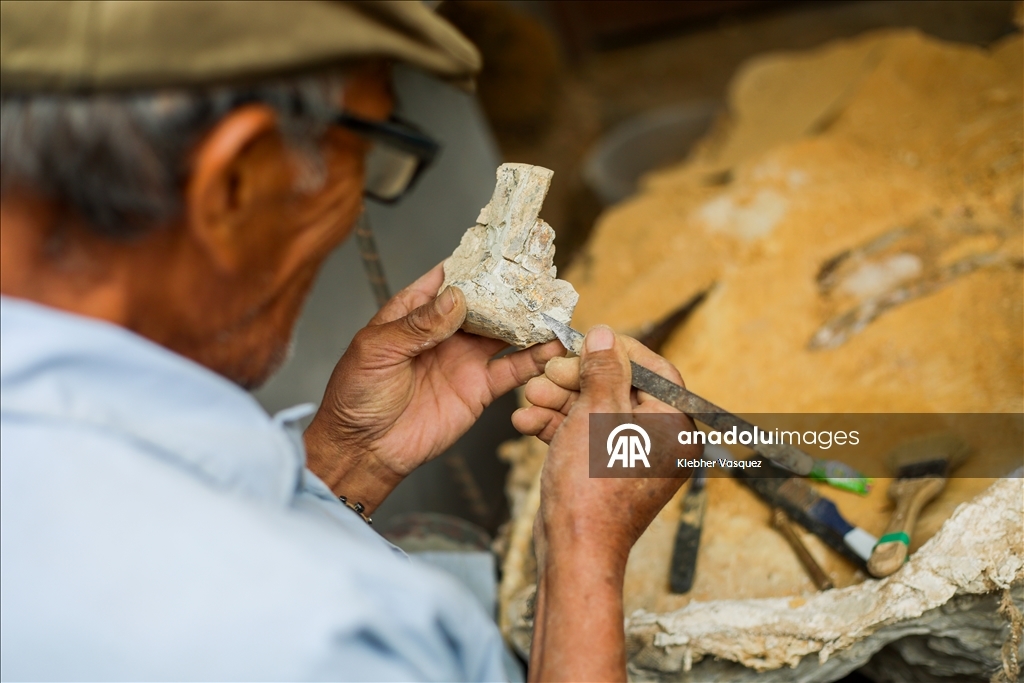
LIMA, PERU - NOVEMBER 4 : A group of scientists restores the fossil of a 20-million-year-old seabird in Lima, Peru, on November 4, 2025. Peruvian paleontologist Mario Urbina, regarded as one of the country’s most prominent scientists in recent years, leads a team of professionals from the Natural History Museum who have made some of the most important paleontological discoveries in Peru for the world. The group is currently in the process of restoring one of its most recent findings: the fossilized remains of a Pelagornis, an extinct seabird that lived more than 20 million years ago. The specimen, with a wingspan of several meters, was unearthed two months ago in the Ica Desert, south of Lima. Once the delicate restoration work is completed, the fossil will be formally presented to the public, marking a new milestone in the scientific career of Urbina and his dedicated team. ( Klebher Vasquez - Anadolu Agency )
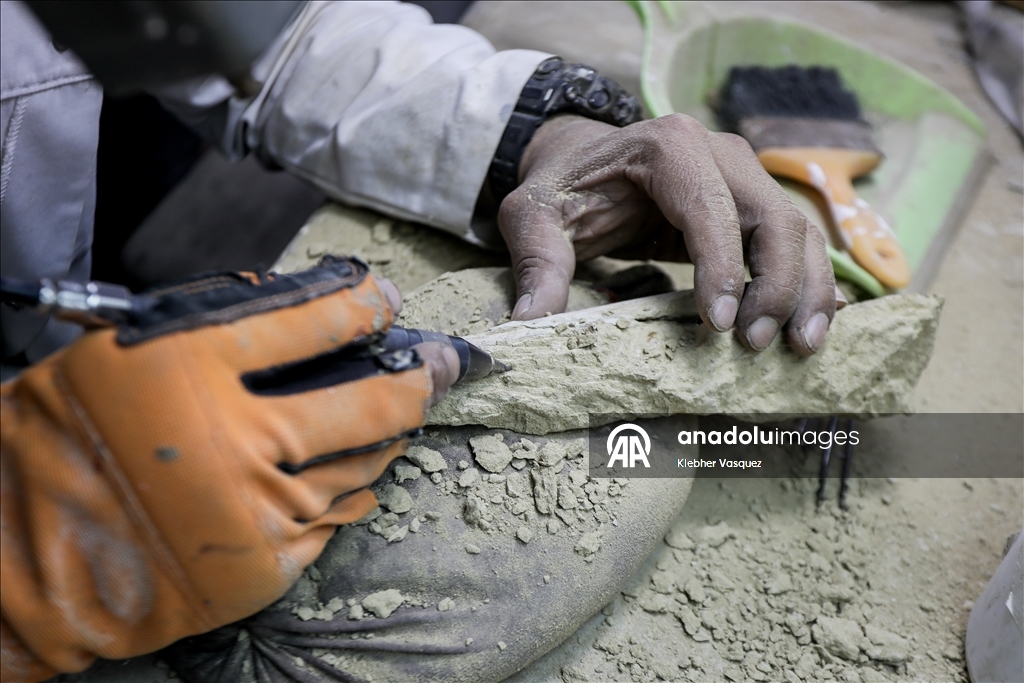
LIMA, PERU - NOVEMBER 4 : A group of scientists restores the fossil of a 20-million-year-old seabird in Lima, Peru, on November 4, 2025. Peruvian paleontologist Mario Urbina, regarded as one of the country’s most prominent scientists in recent years, leads a team of professionals from the Natural History Museum who have made some of the most important paleontological discoveries in Peru for the world. The group is currently in the process of restoring one of its most recent findings: the fossilized remains of a Pelagornis, an extinct seabird that lived more than 20 million years ago. The specimen, with a wingspan of several meters, was unearthed two months ago in the Ica Desert, south of Lima. Once the delicate restoration work is completed, the fossil will be formally presented to the public, marking a new milestone in the scientific career of Urbina and his dedicated team. ( Klebher Vasquez - Anadolu Agency )

LIMA, PERU - NOVEMBER 4 : A group of scientists restores the fossil of a 20-million-year-old seabird in Lima, Peru, on November 4, 2025. Peruvian paleontologist Mario Urbina, regarded as one of the country’s most prominent scientists in recent years, leads a team of professionals from the Natural History Museum who have made some of the most important paleontological discoveries in Peru for the world. The group is currently in the process of restoring one of its most recent findings: the fossilized remains of a Pelagornis, an extinct seabird that lived more than 20 million years ago. The specimen, with a wingspan of several meters, was unearthed two months ago in the Ica Desert, south of Lima. Once the delicate restoration work is completed, the fossil will be formally presented to the public, marking a new milestone in the scientific career of Urbina and his dedicated team. ( Klebher Vasquez - Anadolu Agency )
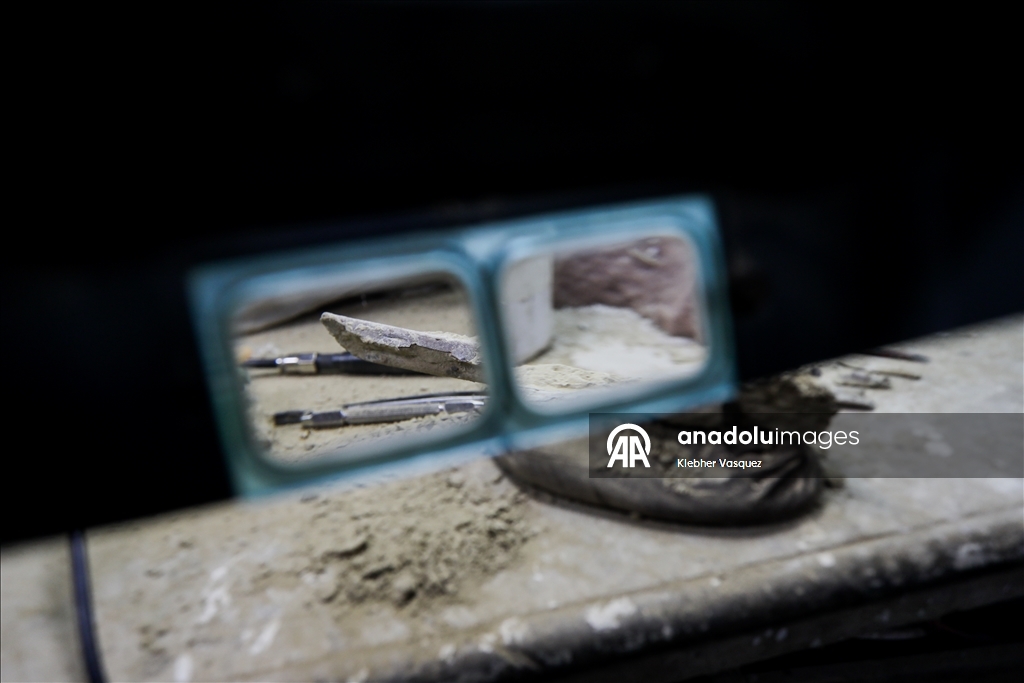
LIMA, PERU - NOVEMBER 4 : A group of scientists restores the fossil of a 20-million-year-old seabird in Lima, Peru, on November 4, 2025. Peruvian paleontologist Mario Urbina, regarded as one of the country’s most prominent scientists in recent years, leads a team of professionals from the Natural History Museum who have made some of the most important paleontological discoveries in Peru for the world. The group is currently in the process of restoring one of its most recent findings: the fossilized remains of a Pelagornis, an extinct seabird that lived more than 20 million years ago. The specimen, with a wingspan of several meters, was unearthed two months ago in the Ica Desert, south of Lima. Once the delicate restoration work is completed, the fossil will be formally presented to the public, marking a new milestone in the scientific career of Urbina and his dedicated team. ( Klebher Vasquez - Anadolu Agency )
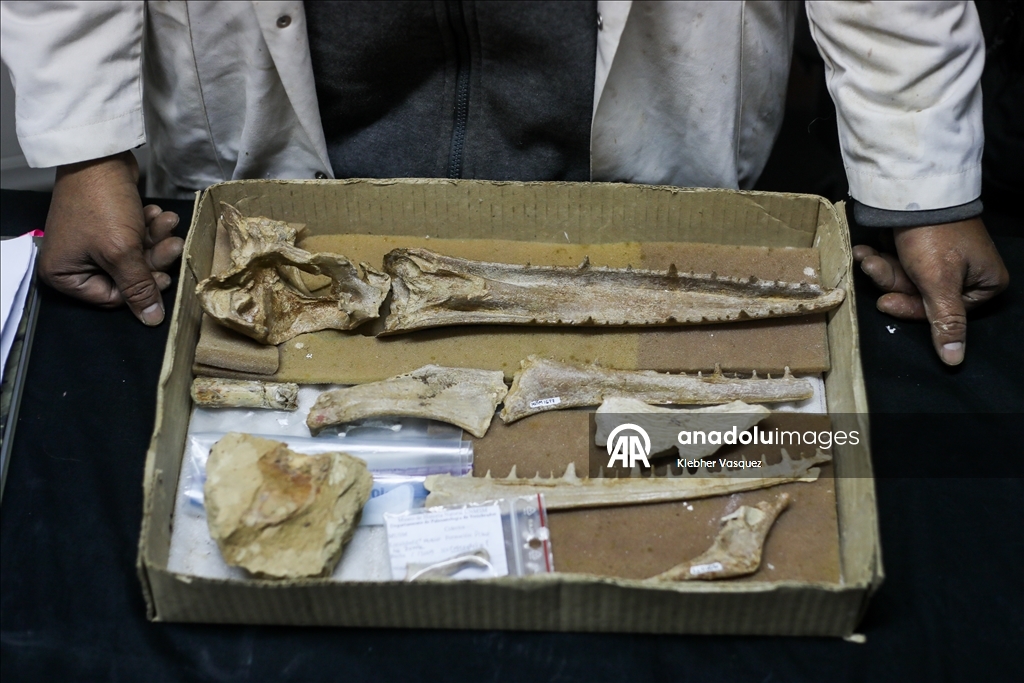
LIMA, PERU - NOVEMBER 4 : A group of scientists restores the fossil of a 20-million-year-old seabird in Lima, Peru, on November 4, 2025. Peruvian paleontologist Mario Urbina, regarded as one of the country’s most prominent scientists in recent years, leads a team of professionals from the Natural History Museum who have made some of the most important paleontological discoveries in Peru for the world. The group is currently in the process of restoring one of its most recent findings: the fossilized remains of a Pelagornis, an extinct seabird that lived more than 20 million years ago. The specimen, with a wingspan of several meters, was unearthed two months ago in the Ica Desert, south of Lima. Once the delicate restoration work is completed, the fossil will be formally presented to the public, marking a new milestone in the scientific career of Urbina and his dedicated team. ( Klebher Vasquez - Anadolu Agency )

LIMA, PERU - NOVEMBER 4 : A group of scientists restores the fossil of a 20-million-year-old seabird in Lima, Peru, on November 4, 2025. Peruvian paleontologist Mario Urbina, regarded as one of the country’s most prominent scientists in recent years, leads a team of professionals from the Natural History Museum who have made some of the most important paleontological discoveries in Peru for the world. The group is currently in the process of restoring one of its most recent findings: the fossilized remains of a Pelagornis, an extinct seabird that lived more than 20 million years ago. The specimen, with a wingspan of several meters, was unearthed two months ago in the Ica Desert, south of Lima. Once the delicate restoration work is completed, the fossil will be formally presented to the public, marking a new milestone in the scientific career of Urbina and his dedicated team. ( Klebher Vasquez - Anadolu Agency )

LIMA, PERU - NOVEMBER 4 : A group of scientists restores the fossil of a 20-million-year-old seabird in Lima, Peru, on November 4, 2025. Peruvian paleontologist Mario Urbina, regarded as one of the country’s most prominent scientists in recent years, leads a team of professionals from the Natural History Museum who have made some of the most important paleontological discoveries in Peru for the world. The group is currently in the process of restoring one of its most recent findings: the fossilized remains of a Pelagornis, an extinct seabird that lived more than 20 million years ago. The specimen, with a wingspan of several meters, was unearthed two months ago in the Ica Desert, south of Lima. Once the delicate restoration work is completed, the fossil will be formally presented to the public, marking a new milestone in the scientific career of Urbina and his dedicated team. ( Klebher Vasquez - Anadolu Agency )
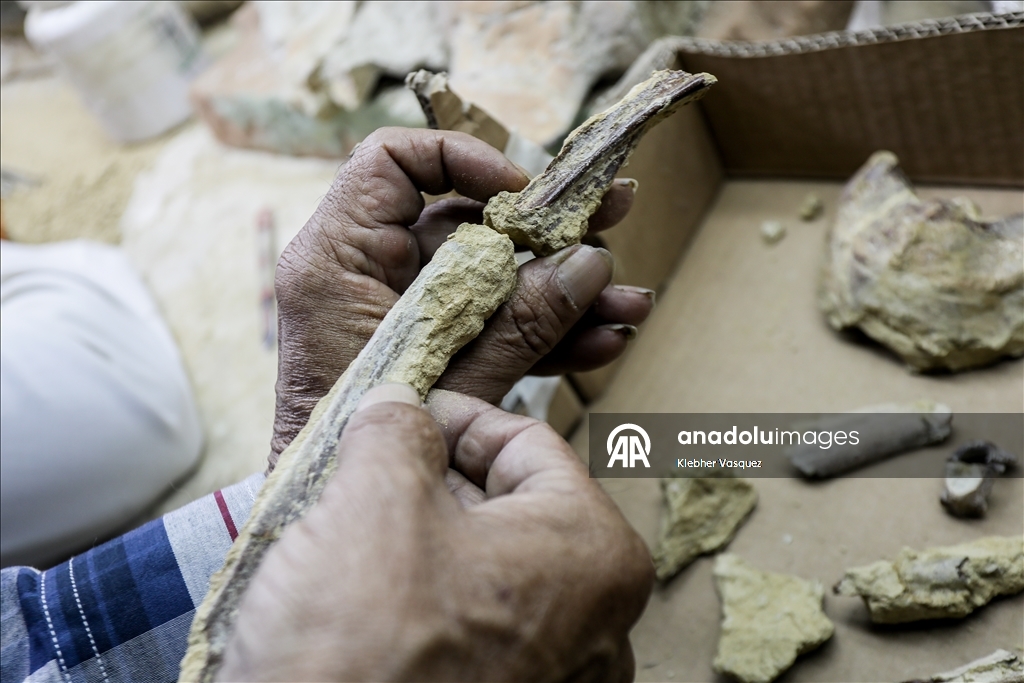
LIMA, PERU - NOVEMBER 4 : A group of scientists restores the fossil of a 20-million-year-old seabird in Lima, Peru, on November 4, 2025. Peruvian paleontologist Mario Urbina, regarded as one of the country’s most prominent scientists in recent years, leads a team of professionals from the Natural History Museum who have made some of the most important paleontological discoveries in Peru for the world. The group is currently in the process of restoring one of its most recent findings: the fossilized remains of a Pelagornis, an extinct seabird that lived more than 20 million years ago. The specimen, with a wingspan of several meters, was unearthed two months ago in the Ica Desert, south of Lima. Once the delicate restoration work is completed, the fossil will be formally presented to the public, marking a new milestone in the scientific career of Urbina and his dedicated team. ( Klebher Vasquez - Anadolu Agency )
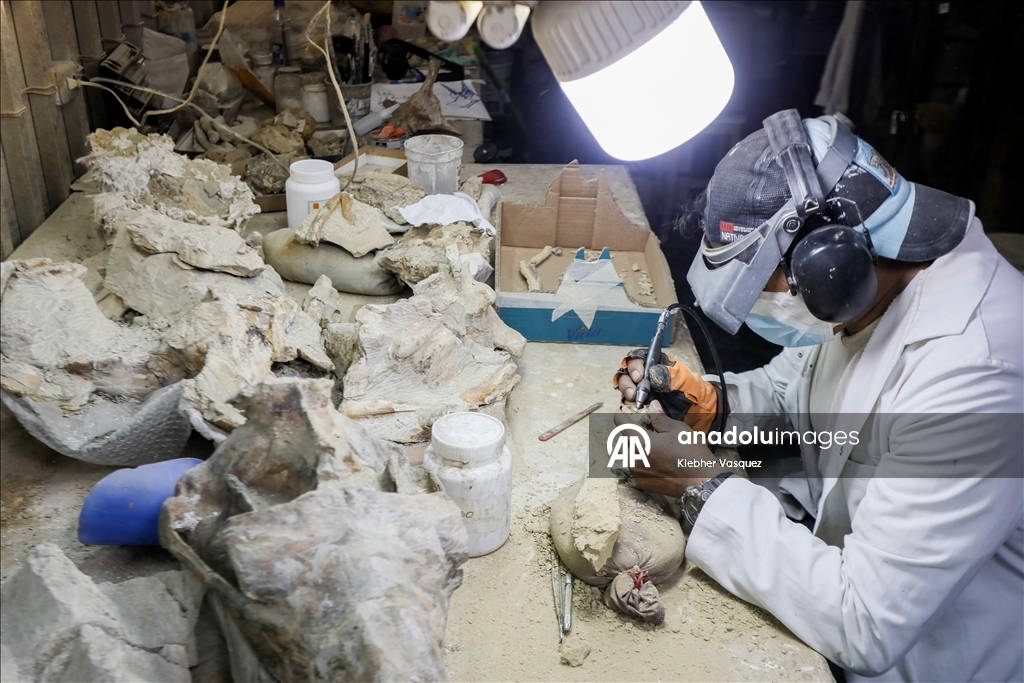
LIMA, PERU - NOVEMBER 4 : A group of scientists restores the fossil of a 20-million-year-old seabird in Lima, Peru, on November 4, 2025. Peruvian paleontologist Mario Urbina, regarded as one of the country’s most prominent scientists in recent years, leads a team of professionals from the Natural History Museum who have made some of the most important paleontological discoveries in Peru for the world. The group is currently in the process of restoring one of its most recent findings: the fossilized remains of a Pelagornis, an extinct seabird that lived more than 20 million years ago. The specimen, with a wingspan of several meters, was unearthed two months ago in the Ica Desert, south of Lima. Once the delicate restoration work is completed, the fossil will be formally presented to the public, marking a new milestone in the scientific career of Urbina and his dedicated team. ( Klebher Vasquez - Anadolu Agency )

LIMA, PERU - NOVEMBER 4 : A group of scientists restores the fossil of a 20-million-year-old seabird in Lima, Peru, on November 4, 2025. Peruvian paleontologist Mario Urbina, regarded as one of the country’s most prominent scientists in recent years, leads a team of professionals from the Natural History Museum who have made some of the most important paleontological discoveries in Peru for the world. The group is currently in the process of restoring one of its most recent findings: the fossilized remains of a Pelagornis, an extinct seabird that lived more than 20 million years ago. The specimen, with a wingspan of several meters, was unearthed two months ago in the Ica Desert, south of Lima. Once the delicate restoration work is completed, the fossil will be formally presented to the public, marking a new milestone in the scientific career of Urbina and his dedicated team. ( Klebher Vasquez - Anadolu Agency )
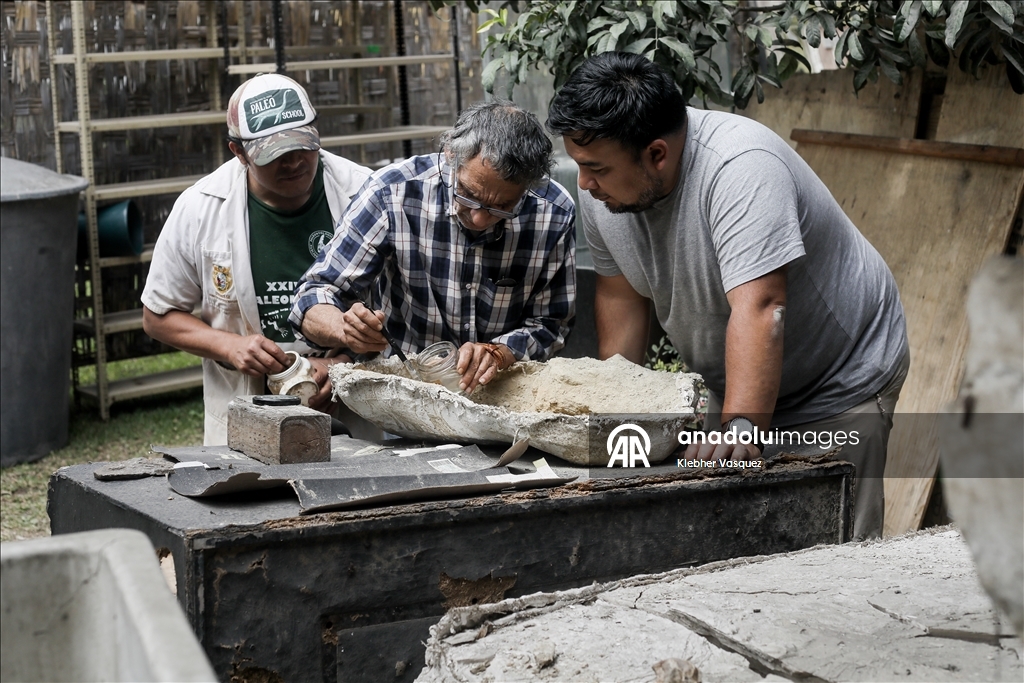
LIMA, PERU - NOVEMBER 4 : A group of scientists restores the fossil of a 20-million-year-old seabird in Lima, Peru, on November 4, 2025. Peruvian paleontologist Mario Urbina, regarded as one of the country’s most prominent scientists in recent years, leads a team of professionals from the Natural History Museum who have made some of the most important paleontological discoveries in Peru for the world. The group is currently in the process of restoring one of its most recent findings: the fossilized remains of a Pelagornis, an extinct seabird that lived more than 20 million years ago. The specimen, with a wingspan of several meters, was unearthed two months ago in the Ica Desert, south of Lima. Once the delicate restoration work is completed, the fossil will be formally presented to the public, marking a new milestone in the scientific career of Urbina and his dedicated team. ( Klebher Vasquez - Anadolu Agency )
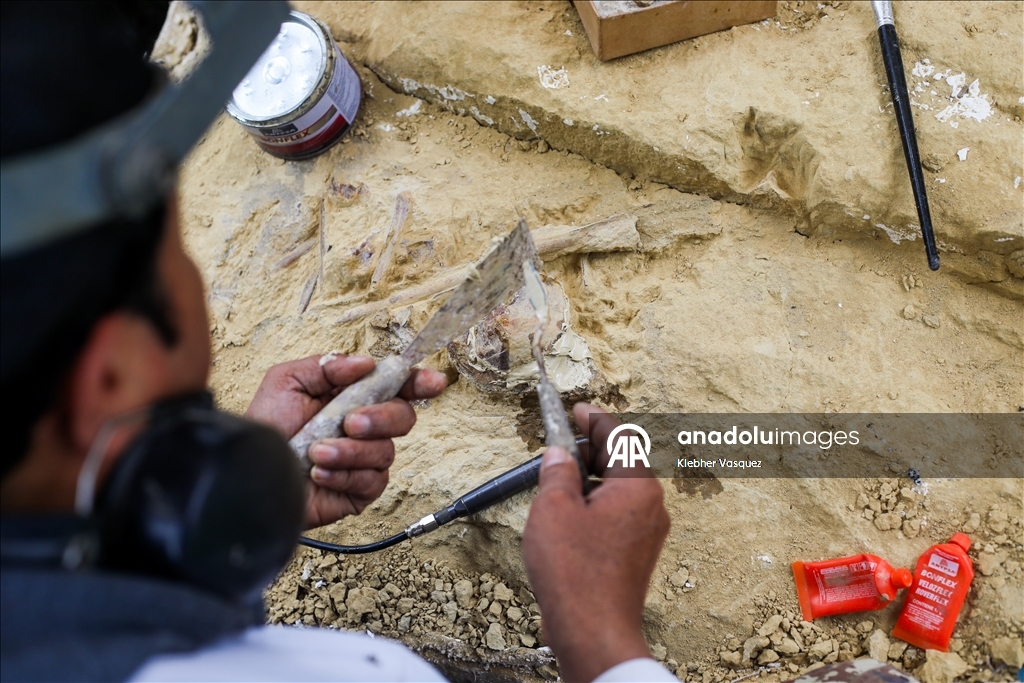
LIMA, PERU - NOVEMBER 4 : A group of scientists restores the fossil of a 20-million-year-old seabird in Lima, Peru, on November 4, 2025. Peruvian paleontologist Mario Urbina, regarded as one of the country’s most prominent scientists in recent years, leads a team of professionals from the Natural History Museum who have made some of the most important paleontological discoveries in Peru for the world. The group is currently in the process of restoring one of its most recent findings: the fossilized remains of a Pelagornis, an extinct seabird that lived more than 20 million years ago. The specimen, with a wingspan of several meters, was unearthed two months ago in the Ica Desert, south of Lima. Once the delicate restoration work is completed, the fossil will be formally presented to the public, marking a new milestone in the scientific career of Urbina and his dedicated team. ( Klebher Vasquez - Anadolu Agency )
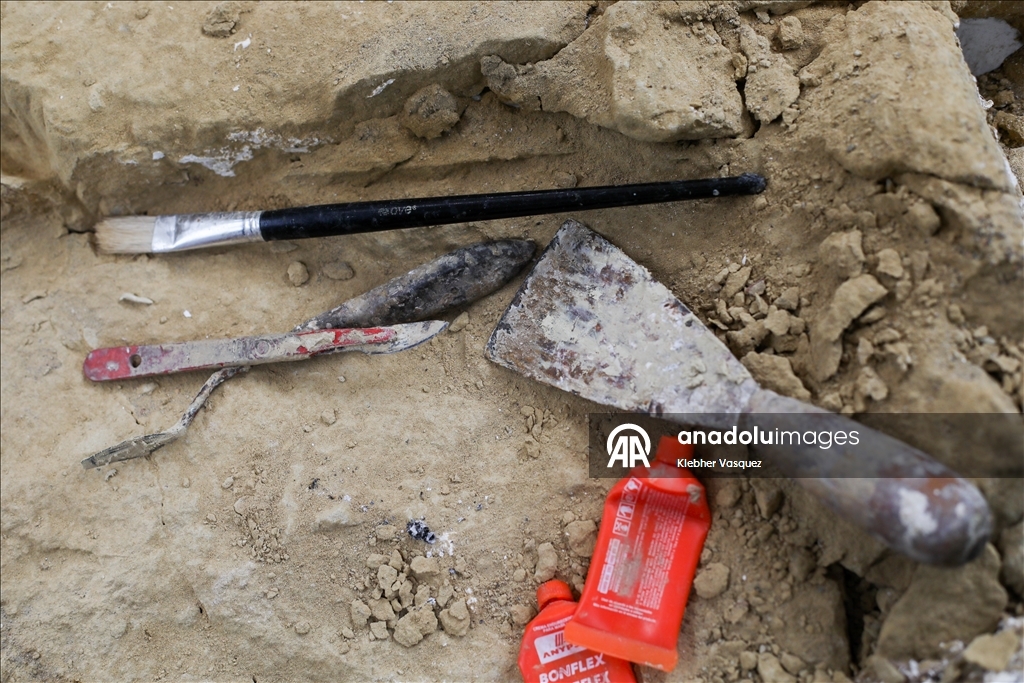
LIMA, PERU - NOVEMBER 4 : A group of scientists restores the fossil of a 20-million-year-old seabird in Lima, Peru, on November 4, 2025. Peruvian paleontologist Mario Urbina, regarded as one of the country’s most prominent scientists in recent years, leads a team of professionals from the Natural History Museum who have made some of the most important paleontological discoveries in Peru for the world. The group is currently in the process of restoring one of its most recent findings: the fossilized remains of a Pelagornis, an extinct seabird that lived more than 20 million years ago. The specimen, with a wingspan of several meters, was unearthed two months ago in the Ica Desert, south of Lima. Once the delicate restoration work is completed, the fossil will be formally presented to the public, marking a new milestone in the scientific career of Urbina and his dedicated team. ( Klebher Vasquez - Anadolu Agency )
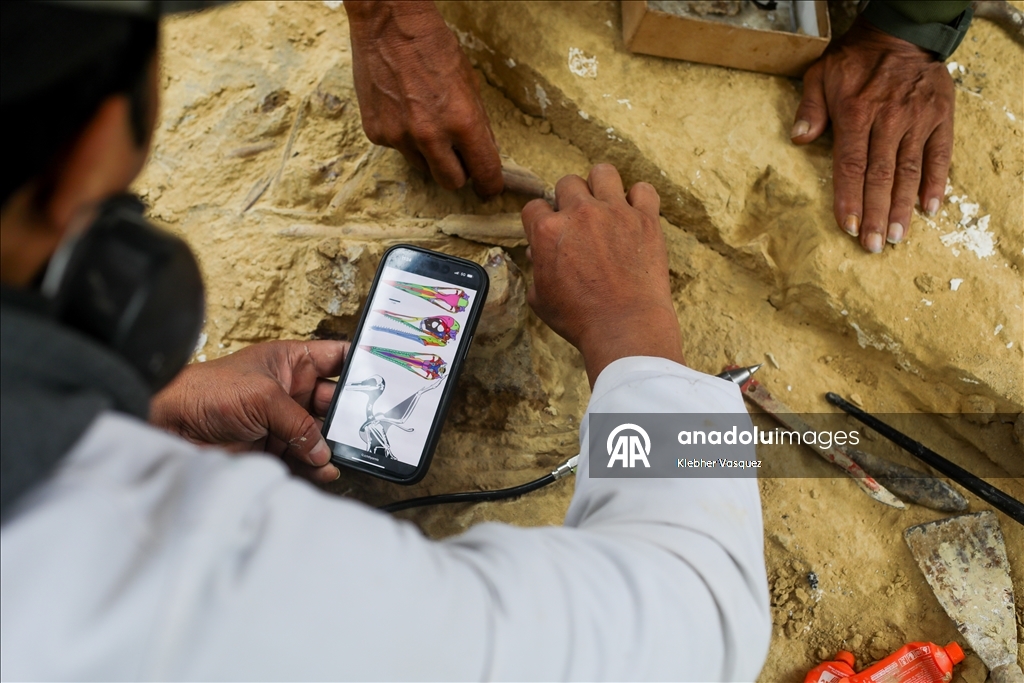
LIMA, PERU - NOVEMBER 4 : A group of scientists restores the fossil of a 20-million-year-old seabird in Lima, Peru, on November 4, 2025. Peruvian paleontologist Mario Urbina, regarded as one of the country’s most prominent scientists in recent years, leads a team of professionals from the Natural History Museum who have made some of the most important paleontological discoveries in Peru for the world. The group is currently in the process of restoring one of its most recent findings: the fossilized remains of a Pelagornis, an extinct seabird that lived more than 20 million years ago. The specimen, with a wingspan of several meters, was unearthed two months ago in the Ica Desert, south of Lima. Once the delicate restoration work is completed, the fossil will be formally presented to the public, marking a new milestone in the scientific career of Urbina and his dedicated team. ( Klebher Vasquez - Anadolu Agency )

LIMA, PERU - NOVEMBER 4 : A group of scientists restores the fossil of a 20-million-year-old seabird in Lima, Peru, on November 4, 2025. Peruvian paleontologist Mario Urbina, regarded as one of the country’s most prominent scientists in recent years, leads a team of professionals from the Natural History Museum who have made some of the most important paleontological discoveries in Peru for the world. The group is currently in the process of restoring one of its most recent findings: the fossilized remains of a Pelagornis, an extinct seabird that lived more than 20 million years ago. The specimen, with a wingspan of several meters, was unearthed two months ago in the Ica Desert, south of Lima. Once the delicate restoration work is completed, the fossil will be formally presented to the public, marking a new milestone in the scientific career of Urbina and his dedicated team. ( Klebher Vasquez - Anadolu Agency )

LIMA, PERU - NOVEMBER 4 : A group of scientists restores the fossil of a 20-million-year-old seabird in Lima, Peru, on November 4, 2025. Peruvian paleontologist Mario Urbina, regarded as one of the country’s most prominent scientists in recent years, leads a team of professionals from the Natural History Museum who have made some of the most important paleontological discoveries in Peru for the world. The group is currently in the process of restoring one of its most recent findings: the fossilized remains of a Pelagornis, an extinct seabird that lived more than 20 million years ago. The specimen, with a wingspan of several meters, was unearthed two months ago in the Ica Desert, south of Lima. Once the delicate restoration work is completed, the fossil will be formally presented to the public, marking a new milestone in the scientific career of Urbina and his dedicated team. ( Klebher Vasquez - Anadolu Agency )
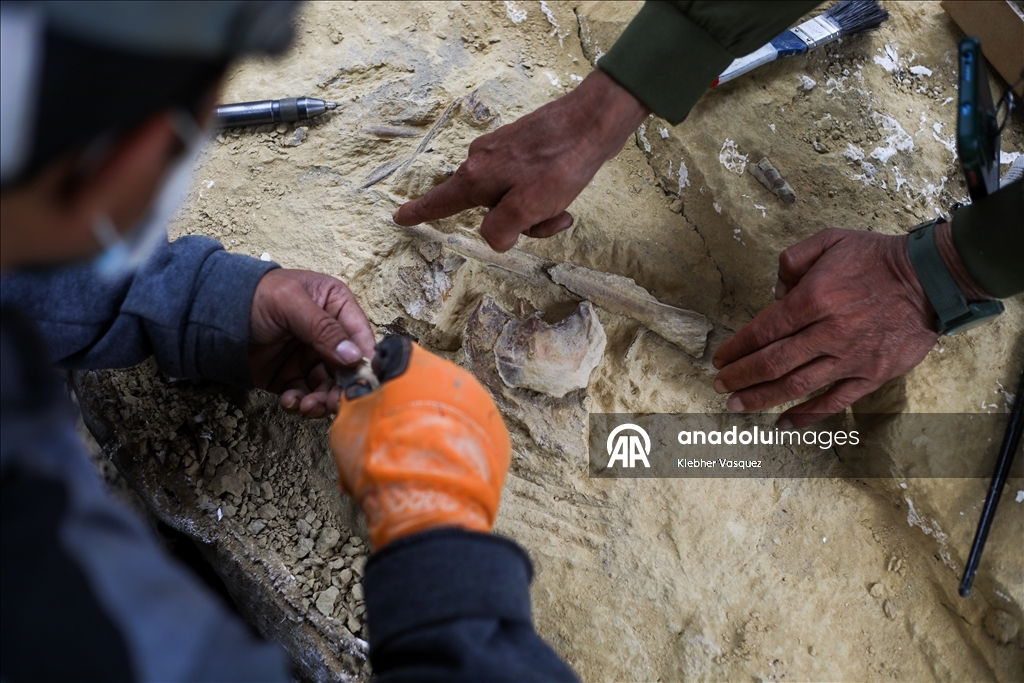
LIMA, PERU - NOVEMBER 4 : A group of scientists restores the fossil of a 20-million-year-old seabird in Lima, Peru, on November 4, 2025. Peruvian paleontologist Mario Urbina, regarded as one of the country’s most prominent scientists in recent years, leads a team of professionals from the Natural History Museum who have made some of the most important paleontological discoveries in Peru for the world. The group is currently in the process of restoring one of its most recent findings: the fossilized remains of a Pelagornis, an extinct seabird that lived more than 20 million years ago. The specimen, with a wingspan of several meters, was unearthed two months ago in the Ica Desert, south of Lima. Once the delicate restoration work is completed, the fossil will be formally presented to the public, marking a new milestone in the scientific career of Urbina and his dedicated team. ( Klebher Vasquez - Anadolu Agency )




